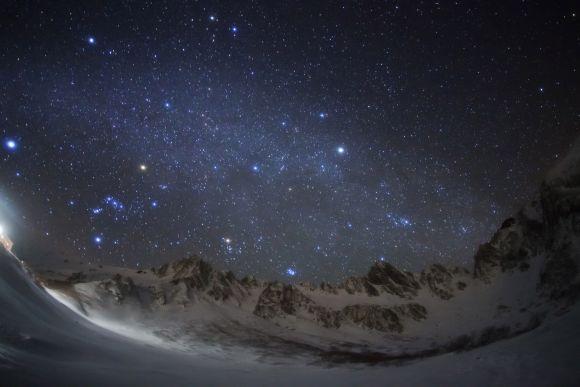
Entries to the 2012 Astronomy Photographer of the Year competition -- run by the Royal Observatory Greenwich in association with Sky at Night Magazine -- includesome awe-inspiring sights.
The competition, which is now in its fourth year, received a record number of entries from enthusiastic amateurs and professional photographers from around the globe.
Shortlisted entries include a breath-taking view of stars over snow-covered Japanese mountains; the full Moon setting behind a historic abbey on Mount Pirchiriano in Italy; a meteor streaking through the sky above a rock formation in Utah, USA; and a group of friends stargazing at a caravan site in the Gower Peninsular, South Wales.
Photographers have also captured sights from across our Solar System, galaxy and beyond; from detailed mosaics of our Moon's surface, to shimmering dust columns in distant nebulae, and out beyond the Milky Way to the swirling Andromeda Galaxy.
The winners of the competition's four categories and three special prizes will be announced on September 19.
Check out 14 entries to this year's contest.
Click NEXT to see more PHOTOS...
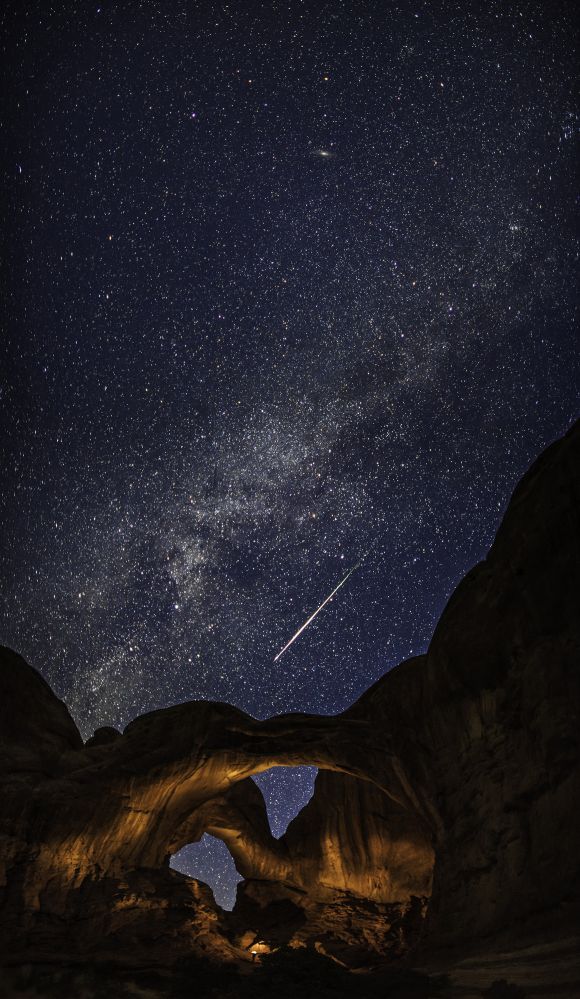
A meteor captured streaking across the sky above Arches National Park, Utah, during the annual Perseid meteor shower. The Perseids is one of the most prolific showers, often with around 80 meteors an hour during its peak. Nevertheless, meteors are hard to catch on camera. The photographer has used an artificial light source to illuminate and emphasise the dramatic rock formations.
Click NEXT to see more PHOTOS...
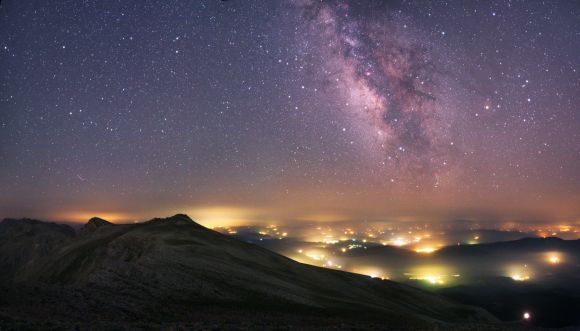
A view from the Uludag National Park in Turkey. The Milky Way stretches across the sky above the manmade pockets of hazy lights from the towns and villages below.
Click NEXT to see more PHOTOS...

The dazzling Aurora Borealis over Hogtuva Mountain in Norway. The Earth's magnetic field funnels particles from the Solar Wind down over the planet's polar regions. More than 80 kilometres above the ground, these particles collide with atoms and molecules of gas in our atmosphere, causing them to glow in the characteristic colours of green and pale red for oxygen and crimson for nitrogen.
Click NEXT to see more PHOTOS...
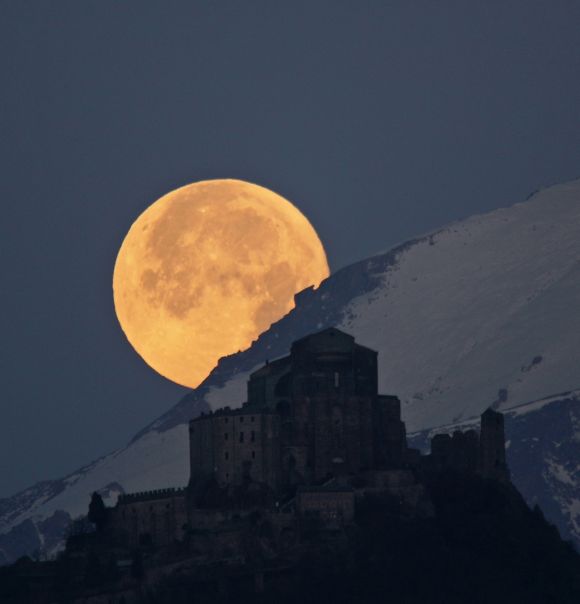
This picture captures the full Moon setting behind the Alps and the Sacra di San Michele, a religious complex situated 1,000 metres up on Mount Pirchiriano in northern Italy. Human, geological and astronomical timescales are juxtaposed in this atmospheric photograph. The building in the foreground may be old by our standards, but the mountains in which it stands formed millions of years ago. Behind them, the setting Moon has remained relatively unchanged for billions years.
Click NEXT to see more PHOTOS...
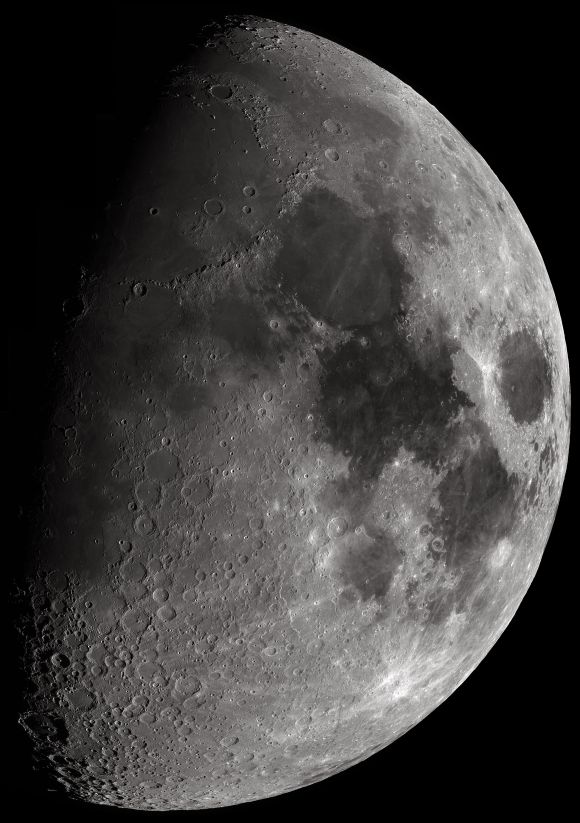
116 megapixel Moon Mosaic
A multi-image mosaic of the Moon, which is our nearest neighbour in space and therefore appears larger in our sky than any other astronomical object apart from the Sun. Even a telescope of quite modest magnification will only show a part of the Moon's surface at one time, meaning that multi-image mosaics such as this are needed to show large areas of its surface.
Click on NEXT to go further...
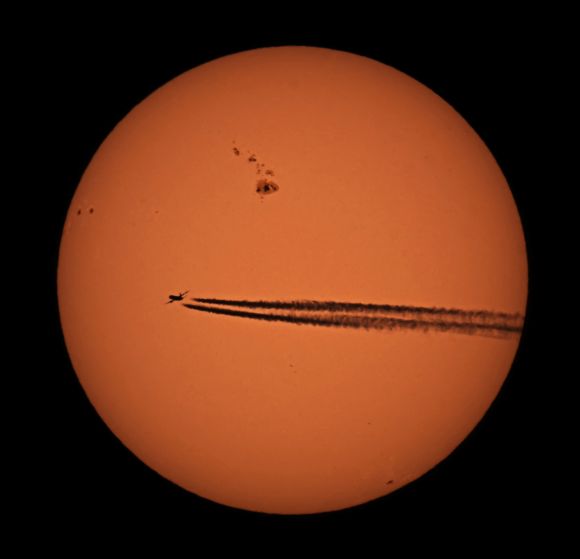
A chance alignment superimposes a jet and its twin vapour trails against the disc of the Sun. Also visible is an enormous sunspot complex, a region of the Sun's surface in which intense magnetic fields are suppressing the upwelling of heat from the solar interior. Sunspot activity has been increasing in 2012 as the Sun approaches the peak of its eleven year-cycle.
Click NEXT to see more PHOTOS...
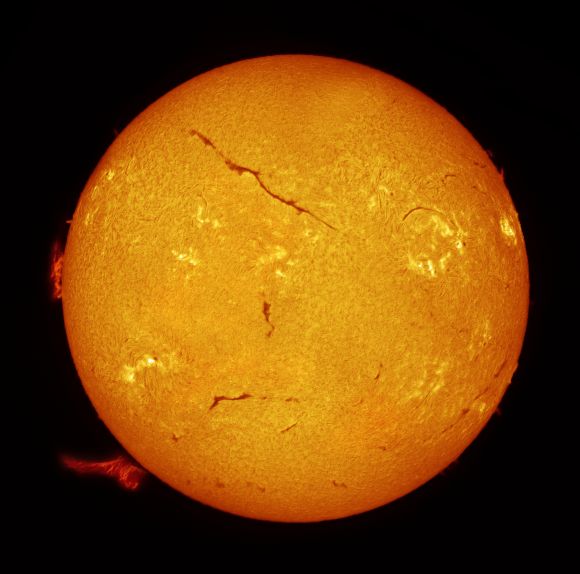
This image shows solar activity including a huge solar prominence. 2012 saw the Sun moving towards the peak of its eleven year-cycle of activity following an unusually long and quiet lull. Sunspots, explosive flares and prominences are much more common than in previous years.
Click NEXT to see more PHOTOS...
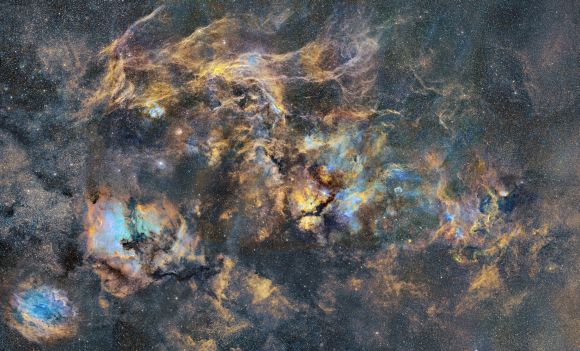
Cygnus
This mosaic image reveals a huge swathe of the sky in the constellation of Cygnus. Huge clouds of colourful glowing gas and lanes of dark dust stretch across the field of view. Their light is too faint to register with the human eye, but long exposure times and special filters allow us to appreciate their grandeur and scale.
Click NEXT to see more PHOTOS...

This picture shows the column of dust known as the 'Elephant's Trunk' in the constellation of Cepheus. Deep within the dense clumps of dust and gas that make up the 'trunk' new stars are currently forming.
Click NEXT to see more PHOTOS...
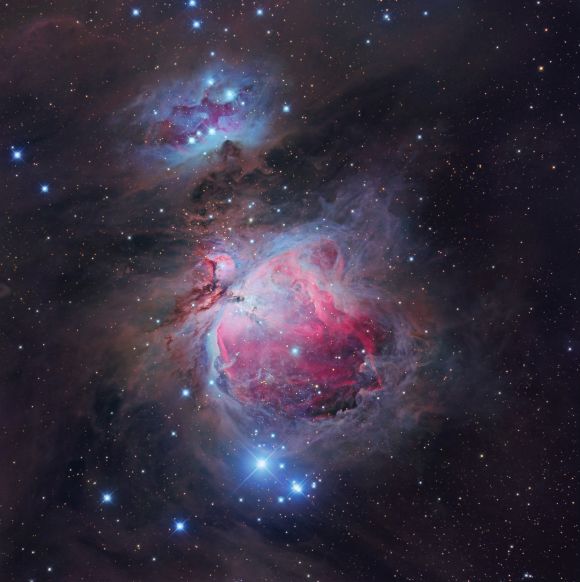
To the naked eye the Orion Nebula appears as a small patch of hazy light amongst the stars of Orion's sword. The true scale and complexity of the Nebula only becomes apparent when viewed through a telescope. In the centre of the nebula newly-formed stars blast their surroundings with radiation, carving out a cavity in the dust and causing the hydrogen gas to glow pink.
Click NEXT to see more PHOTOS...
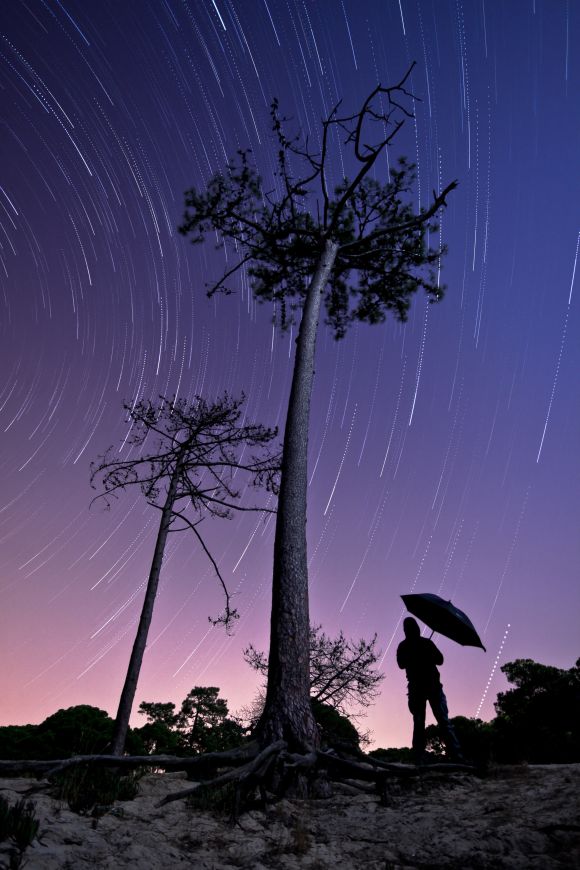
It's Raining Stars
This time-lapse shows how the stars appear to move across the sky as the Earth rotates. In a humorous touch, an observer appears to use an umbrella to shelter from the star trails, whilst Jupiter is also visible on the right of the silhouette.
Click NEXT to see more PHOTOS...

The red and green curtain of the Aurora Borealis produced as solar winds collide with particles in the Earth's atmosphere. This image was shot using a full frame fish-eye lens, and the tiny human figure framed in the image emphasises the scale and grandeur of the lights.
Click NEXT to see more PHOTOS...
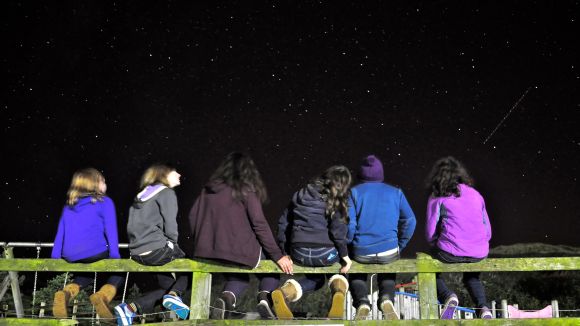
Stargazers
This is a self-portrait of the photographer (far right) with her friends at her caravan site in the Gower Peninsular, Wales. Several short exposures were aligned and combined to capture the crisp stars and dark sky, while minimising trailing due to the Earth's rotation; the visible progress of the aeroplane in the upper right reveals this process. Adding the final frame of the backlit friends gives context to the scene.
Click on NEXT to go further...
...